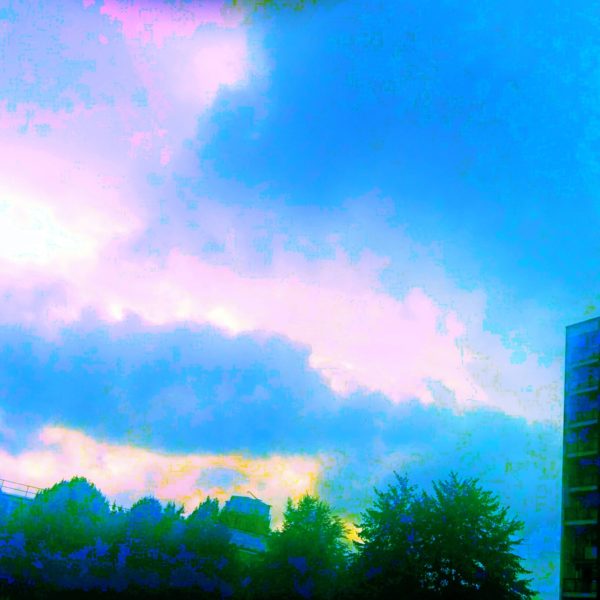horrible pictures –a short essay about contemporary photography

I. Disappearance of the medium
…
There must be no perceptible seam between reality and its real-time representation on the screen of a smartphone: no mediation, pure analogy (ἀνάλογον – análogon). Disappearance of the medium begets extreme impatience and obsession for analogy. The means a smartphone has to produce the expected result of instant analogon is obviously analogy itself. Technically it refers to precedent existing images (jpgs) in its archive to signify lights and shadows of the current scene. It can’t but referring to what has been done already. Thus seemingly a blind alley where nothing new can be recorded ex novo, for recording of data is only a recollection and reinterpretation of past data from an archive of existing images. Production of images becomes somehow a mere reproduction of a collective memory of an unknown stranger.
II. Accumulation of sparsa fragmenta
…
Seemingly an incredible amount of different commodities for different niches of people guarantees diversification and characterization to the individual. In reality consumer’s choices are very much constrained in strict predefined paths; freedom of choice and customization are just a chimera sold by the iperconsumistic capitalism to function and legitimate itself. Likewise smartphone photography offers to the user a number of filters, combinations and possibilities to make the recording of reality an act of presentation and definition of the self, but in the end the user is lead to avoid any mediation and produce in the context of the seamless path traced by the hidden medium.
It’s the updated version of the tourists of reality shaping their experience of New through the repetitive and ritual act of taking a photograph. It is furthermore intriguing to note that one takes a photograph, which makes perfect sense in a society mainly based on the principles of appropriation (with or without the mediation of a monetary exchange).
III. Le beau c’est vrai – Truth or death
…
The only defence against this disquieting, disorienting and disgusting “all” assailing us from everywhere is Truth. True things: truth is simple and transparent, a purification is compulsorily required to be entitled to respectable photographic representation. Photography is morally forced to be honest and real. All has to be shown and nothing can be hidden. Photographers must be mere recording organisms, they can’t claim any interpretation or alteration, much less a mise au monde.
…
Gianni Berengo Gardin signs every photographic print he produces under the statement “True Photograph. Not corrected, edited or invented with a computer”. Critic Roberto Cotroneo warns against smartphone photographs: “You are shooting horrible pictures without even knowing it. They are deceiving you”. Nobody wants to be deceived and everybody demands truth. Smartphone photos depict reality so they must be true as well. However it’s a low-end form of truth, for it is not beautified and if it is beauty is only apparent; it conceals a horrible picture. All pundits urge to state those are not photographs but mere images.
…
A hand is writing on a white sheet “Vera fotografia” (True photograph). It was 1978, the photograph was by Mimmo Jodice. “One who is scandalised not only is trivial but above all badly informed”. Where does all this disdain come from?
IV. Beautification as the last form of moral representation
…
If photography can only say “how beautiful…” for it inevitably crystallises, transfigures and glorifies reality, it is the observer’s right to choose not to be overwhelmed by all beauties he is made look at. Everything is beautiful just as nothing is beautiful; not all beauties can be of interest, not all beauties can pierce with the same intensity, not all beauties can be recognised as inherently beautiful, not all beauties have the fascination of the New. In the end beautification, just as the obliged display of the intolerable and violent image, can’t be the modus operandi of engaged artists and creatives to force the filling of the void, indifference towards men can’t be morally sanctioned with obliged aesthetic paths.
V. Beyond true and false, looking for the New photograph
In Ugo Mulas’s “Verifiche” series the artist puts into question and interrogates the photographic medium about itself. In “5. L’ingrandimento – Il cielo per Nini” Mulas enlarges a photograph of a sky over and over again until only grain can be seen. The subject, the referent, reality vanish into the medium, the pure and simple object photograph. Reality is indeed necessary for the photograph to occur in first place but at this stage of blow-up nothing is truly shown anymore except for the medium itself. Of course something has indeed been, but does it really matter what has truly been? “I undo the image for the sake of its substance”.
…
The hidden medium is designed to never be wrong, to translate an unknown situation to a known circumstance already present in the archive and therefore react in a known way to produce a visually acceptable outcome. It must be then deceived to interpret a situation in the wrong way and producing a wrong result, ie a visually unacceptable result. It must be laid naked to reveal its blips, its limits must be taken to an extreme level.
A new language will be constructed deriving from the failure of the -finally- revealed medium to provide the acceptable vision, the umpteenth predictable re-elaboration, the expected and correct outcome.
photo by me, part of the series 'Horrible Pictures (2014-2015)
{note: this blog post was originally published in 2015}
get updates about new blog posts –join the newsletter.
but first please read the privacy policy otherwise we go to jail.
